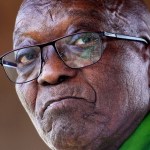My earliest encounters with the kingdom of sick were through my late grandmother’s experiences in the eighties, as I watched her slide into blindness, probably due to glaucoma. Given the sluggish transport system in Hammanskraal at the time, and the mind-numbing queues at the now infamous Jubilee hospital, we had to dedicate a full day to have a decent appointment with a doctor and to collect from the hospital’s pharmacy any medication that might be prescribed.
This was before cellphones and the internet, so all that we knew about my grandmother’s gradual decline was based on the little we could glean from the mutterings of inattentive doctors. The diagnosis was slow in coming and given with little conviction and even less empathy. We survived on little but hope, eye-drops and multi-vitamins. My grandmother never emerged from the much-feared kingdom. Eventually she turned her back on the healthcare system and learned to live with her blindness.
I would hope that in a free, more prosperous, more connected country with better infrastructure, such experiences would be in the past. But the headlines suggest otherwise.
I am reminded of all of this by a fascinating documentary I stumbled across on Al Jazeera called Indian Hospital Revisited. The documentary returns to the site of a series shot two years earlier, Indian Hospital, which chronicles healthcare innovation in an enterprise based in the city of Bangalore. The series is also a detailed study of the ways in which health is linked with broader socio-economic developments, for better and for worse. We are taken into the home of a family that struggles, in the face of the cost of care relative to their income, to keep a daughter with kidney disease and renal failure alive. The lifesaving kidney transplant that promises to give her a productive life is undermined by the environment in which the young woman lives, which includes stress and domestic violence. The young woman is trapped in the vicious cycle of ill health, which leads to unemployment (in her case she exhausts her leave days and is let go from work), and even worse health as care slips out of reach.
But there are also happy stories, such as that of the abandoned baby with a severe facial cleft who receives exceptionally complex reconstructive surgery in spite of being under the care of an orphanage. Or the teenager whose jaw has been locked since she was a baby, but after surgery she is now able to eat properly and smile for the first time in about fourteen years. This is a mixed blessing, due to her family’s poverty and the realities of her rural village community; her new-found vitality makes her eligible to become a child bride.
At the centre of the documentary is the audacious vision of an Indian doctor, Dr Devi Shetty, to provide affordable, high-quality healthcare to all, rich and poor alike. He is not shy about his intentions as he goes about running Narayana, a hospital he founded to fulfil his vision. Narayana, according to Al Jazeera, boasts a 1,000 beds in its cardiac unit, 500 beds in its eye hospital and 1,400 multi-disciplinary beds. The volumes are unusually high, with the complex seeing about 7,000 outpatients a day. The model depends on scale and operationally efficiency. Dr Shetty refers to Walmart with admiration. A unique combination of medical skill and business savvy, he jokingly calls management accounts post-mortems because they arrive too late to do anything meaningful with them. He tracks the financials of his hospitals on a daily basis to manage the fine balance between profitability and providing access to the poor.
Measures to lower cost as Narayana include leasing equipment instead of purchasing it. This is a fairly straightforward business proposition that has been tried in many other industries. Crucially, in the medical sphere, it alleviates the drive towards the over-provision of services. In this model, doctors order the tests that they need, rather than nice-to-have diagnostics that inflate the medical bill without much clinical impact. Narayana has also managed to build a model that provides quality care to rich and poor alike; with the rich paying a premium and getting additional services such as private rooms, whilst the poor are subsidised.
We have created a mystique around healthcare. The thought of ‘Walmartising’ its provision makes many cringe. But that is the approach that Dr Chetty, who has been dubbed the Henry Ford of medicine, embraces. There is no shame in his game; which is ultimately about expanding access to healthcare. The model is not perfect. The hospital, in spite of its scale economies, has not met its target of reducing the cost of dialysis. Much seems to depend on the founder’s charisma and his team of highly motivated and unusually productive staff. These are factors that are difficult to replicate across a whole system.
This is not India; I am reminded as I mutter with admiration throughout the show. Yes, it’s not. We do not enjoy the scale that country has due to its population size. We do not produce the same number (or ratio, I suspect) of healthcare practitioners. But our healthcare system could benefit from low cost health interventions that expand access without compromising quality. The National Development Plan identified the non-communicable disease burden, especially heart disease, high blood pressure, high cholesterol and sugar diabetes as a major threat to the country’s development over the next two to three decades. This is in addition to the other elements of what is dubbed our ‘quadruple burden of disease’: HIV/Aids and related diseases such as TB; violence, injuries and trauma, and maternal and child mortality and morbidity. Expenditure on healthcare in South Africa, at over 8% of GDP, is comparable to other middle income countries, but outcomes are poor.
A high disease burden has a negative impact on economic growth and human development. Illness can push newly middle-class families back families back into poverty. In spite of the obvious and crucial role that healthcare plays in progress, there are many societies that remain mired in seemingly intractable debates about how to deliver healthcare in an equitable manner. The US is a stark example of this pathology. In spite of its high disease burden and a weakening economy with increasing numbers of citizens with precarious incomes, that country’s health care reform initiatives, including Hillary Clinton’s attempts in the 1990s all the way to Obamacare today, are paralysed by partisanship and vested interests.
Yet the answer surely starts with open debate and interventions that require partnerships between diverse interests and sectors to lower the cost of prevention, screening and care. Across the world, innovations are emerging on various fronts – information (including patient empowerment tools), distribution, organisation, process, financing (including micro-insurance) and communication (including tele-medicine) – to realise a new approach to healthcare delivery. We cannot afford to indulge in American-style policy paralysis and risk being left behind. DM
















